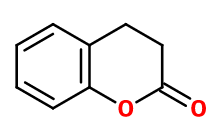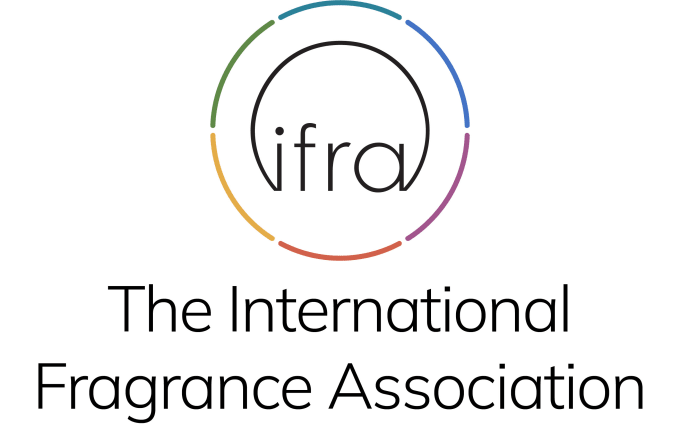
Photo credits: ScenTree SAS
Dihydrocoumarin
Chroman-2-one ; Benzo dihydro pyrone ; Benzo dihydropyrone ; 1,2-benzodihydropyrone ; Dihydrobenzopyranone ; 2-oxo-chroman ; 2-chromanone ; Dihydro coumarin ; 3,4-dihydro-1-benzopyran-2-one ; Dihydrobenzopyrone ; Hydrocoumarin ; Melilotic acid lactone ; Melilotic lactone ; Melilotine ; Melilotol

Photo credits: ScenTree SAS
Do you sell any of the raw materials? Would you like to let our users know?
Send an email to fournisseurs@scentree.coto learn about our advertising opportunities.
Do you sell any of the raw materials? Would you like to let our users know?
Send an email to fournisseurs@scentree.coto learn about our advertising opportunities.
General Presentation
-
CAS N° : 119-84-6
-
EINECS number : 204-354-9
-
FEMA number : 2381
-
FLAVIS number : 13.009
-
JECFA number : 1171
-
Appearance : Colorless liquid to solid
-
Density : 1,169
-
Volatility : Base
-
Price Range : €€
Physico-chemical properties
-
Molecular formula : C9H8O2
-
Molecular Weight : 148,16 g/mol
-
Log P : 1
-
Fusion Point : 23°C
-
Boiling Point : 272°C
-
Detection Threshold : Donnée indisponible.
-
Optical rotation : Donnée indisponible
-
Vapor pressure : Donnée indisponible
-
Refractive Index @20°C : Donnée indisponible
-
Acid Value : Donnée indisponible.
-
Flash Point : 113°C
Uses
Uses in perfumery :
Dihydrocoumarin is not so used in perfumery, but widely used in aromas because Coumarin is not edible. Gives a base to fruity notes, gives a dried fruits note. Used in vanilla flavours, alternating with tonka bean and Peru balsam. Used in white chocolate notes to counterbalance acids.
Year of discovery :
Data not available.
Natural availability :
Dihydrocoumarin can be extracted in its natural state from several plants, including medicinal tea and Tarragon EO.
Isomerism :
Dihydrocoumarin does not have any isomer used in perfumery.
Synthesis precursor :
Dihydrocoumarin can mediate the synthesis of Hexahydrocoumarin or Octahydrocoumarin. The hydrogenation which allows to obtain these products must be made with the appropriate catalyst and conditions.
Synthesis route :
Dihydrocoumarin is synthesized from coumarin, by a Raney nickel catalysed hydrogenation reaction. On the other hand, Hexahydrocoumarin can be dehydrogenated during the vapor phase, with a palladium catalysis in order to obtain Dihydrocoumarin.
Regulations & IFRA
Allergens :
This ingredient does not contain any allergen.
IFRA 51th :
This ingredient is restricted by the 51th amendment
- Quantitative limit on the use :
-
Cat.1 Cat.2 Cat.3 Cat.4 Cat.5A B C DCat.6 0,038 % 0,011 % 0,23 % 0,21 % 0,053 % 0,053 % 0,053 % 0,018 %0,12 % Cat.5A B C DCat.6 0,053 % 0,053 % 0,053 % 0,018 %0,12 % Cat.7A BCat.8 Cat.9 Cat.10A BCat.11A BCat.12 0,43 % 0,43 %0,018 % 0,41 % 1,5 % 1,5 %0,018 % 0,018 %No restriction Cat.10A BCat.11A BCat.12 1,5 % 1,5 %0,018 % 0,018 %No restriction
Annexe I :
Some regulated synthetic ingredients are found in nature and in certain proportions in natural ingredients. This presence in nature has to be taken into account when calculating limits of use recommended by the IFRA. In case you do not know these concentrations, you can use the ones estimated by the IFRA. Here they are :
| List of regulated compounds contained in this ingredient | |||
|---|---|---|---|
| Ingredient Name | Botanical Name | CAS N° | Estimated Concentration |
| Tonka Bean absolute | Dipteryx odorata | 8024-04-2 | 1,85 |
| Deertongue leaf absolute | Liatris odoratissima (Walt.) Willd. | 68606-82-6 | 2 |



